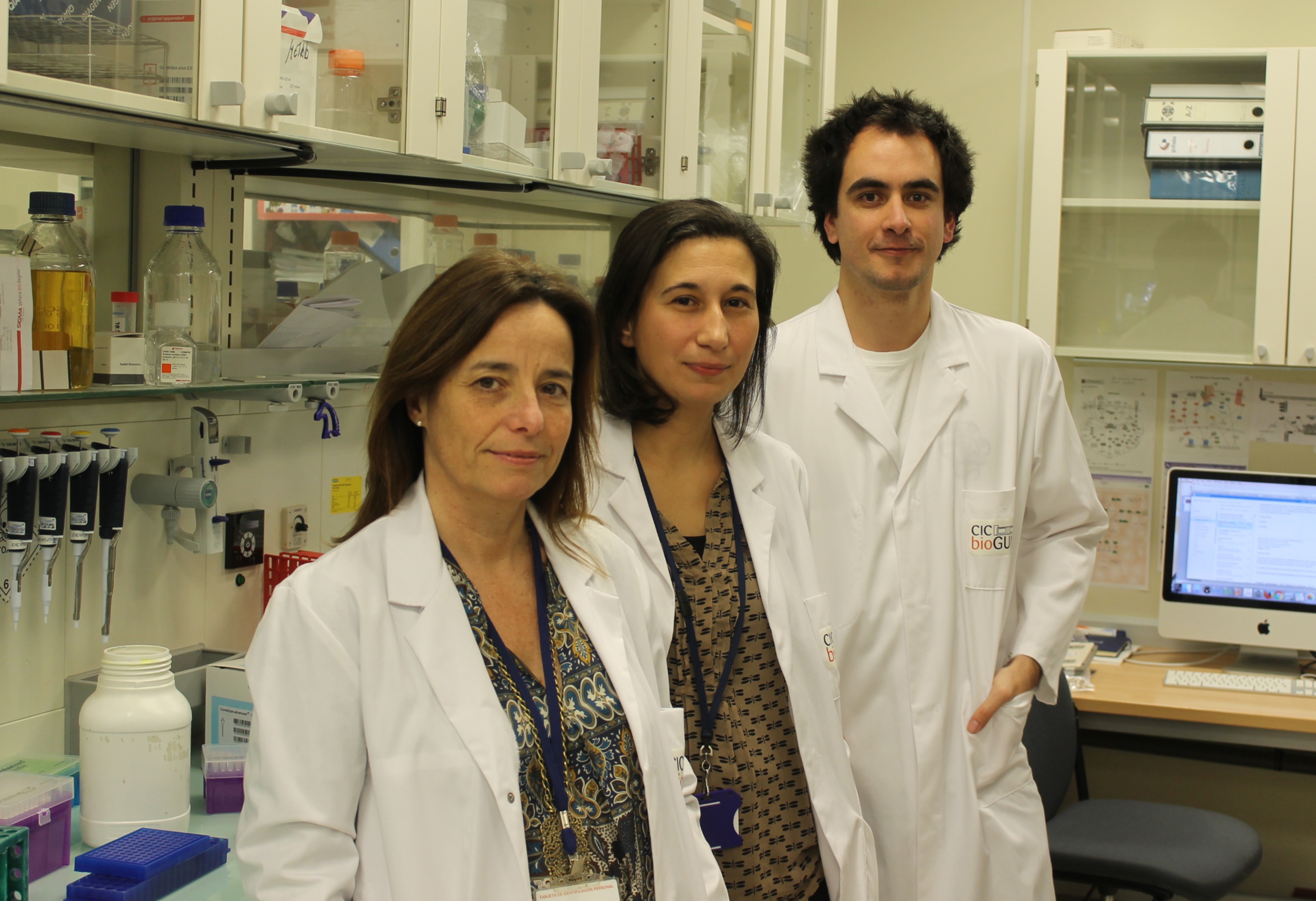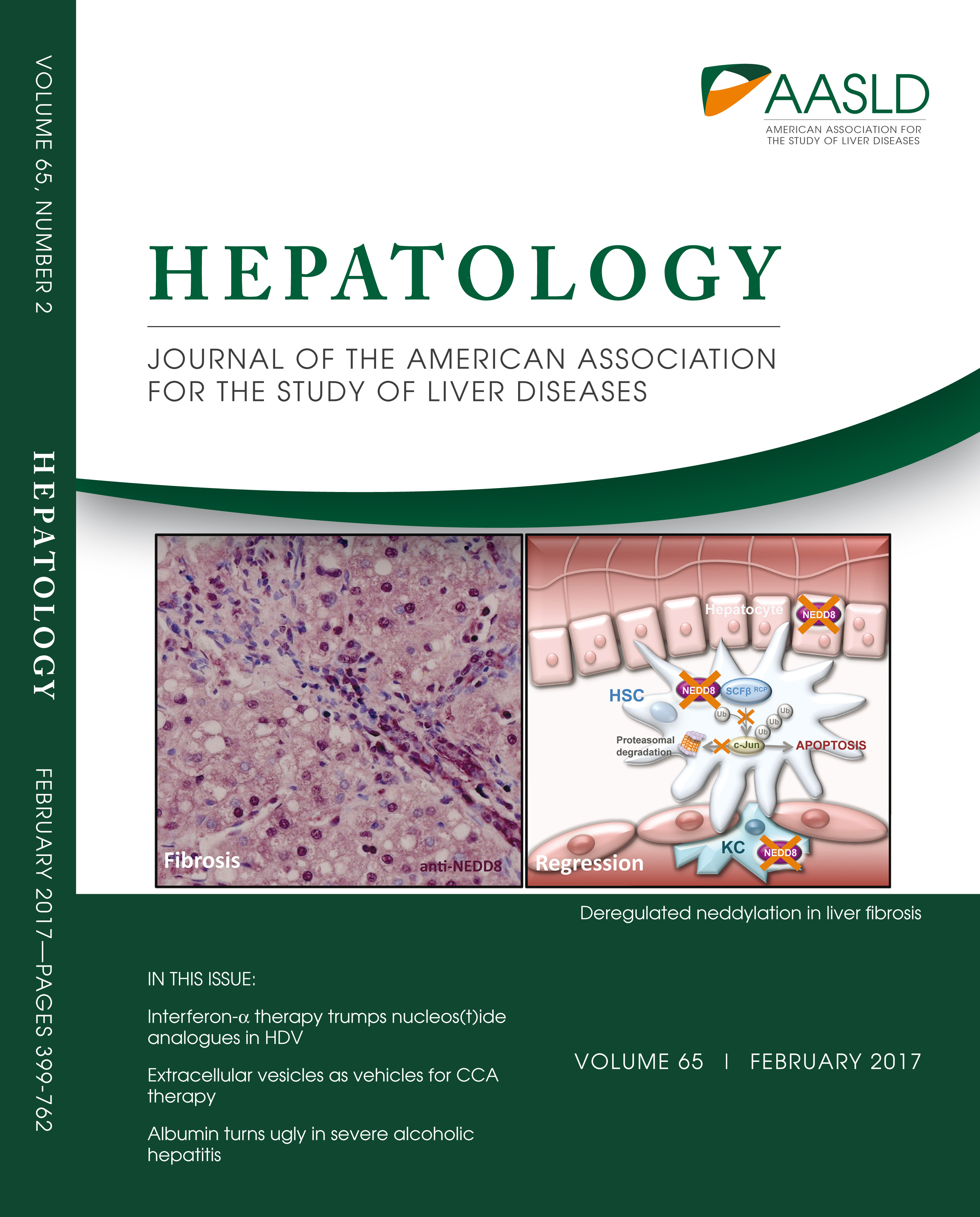
2017/01/25
CIC bioGUNE- CIBEREHD researchers describe for the first time the involvement of the nedd8-mediated post-translational modification, neddylation, in liver fibrosis progression and resolution
Liver fibrosis is an integral part in the progression of chronic liver disease, a health problem related to type 2 diabetes and obesity, the twin epidemics of the 21st century. In spite of the high economic and health burden associated with chronic liver disease, to date, alternative therapeutic approaches that can reverse fibrosis or halt fibrosis progression to cirrhosis are scarce.
A study led by Drs. Martínez-Chantar and Cardoso Delgado and conducted by Imanol Zubiete-Franco, implicates for the first-time deregulated conjugation of the ubiquitin-like molecule nedd8 to proteins, neddylation, in the pathogenesis and resolution of liver fibrosis.
These findings have been published in the prestigious journal Hepatology and selected as cover figure of the 2017 February issue. Different funding sources sponsored this international collaborative research, and the authors would like to specially acknowledge the contribution of non-profit organizations and foundations supported by individual and anonymous donors, such as the Asociación Española contra el Cáncer (AECC), the AECC Provincial Executive in Bizkaia and the EiTB Maratoia programme.
Liver fibrosis is an integral part in the progression of chronic liver disease, ultimately leading to cirrhosis and liver cancer. Even though historically, viral hepatitis was the major risk factor for liver fibrosis, type 2 diabetes and obesity, the twin epidemics (“diabesity”), are now emerging as the most common cause of liver fibrosis. Thus, rather than a falling of liver cancer incidence as a result of prevention and new pharmacological treatments for viral hepatitis, an increase in liver cancer is evident in the last years in developed countries as a result of the rising prevalence of “diabesity”. In spite of the fact that chronic liver diseases impose a significant socioeconomic burden on patients and the healthcare system, alternative therapeutic approaches that can reverse fibrosis or halt fibrosis progression to cirrhosis are scarce. To address this, as pointed out by Dr. Martínez-Chantar, “a better knowledge of the mechanisms underlying liver fibrosis can provide clues on new treatments and drug development”.
Published this week in the prestigious journal Hepatology, the study was mainly conducted by researchers from the Liver Disease Laboratory at CIC bioGUNE-CIBEREHD, and led by Drs. Martínez-Chantar and Cardoso Delgado being Imanol Zubiete-Franco the first author. The authors report for the first time how the stabilization of proteins by the covalent binding of the ubiquitin-like molecule nedd8 is aberrant in clinical and experimental mouse models of liver fibrosis. Moreover, Martínez-Chantar adds that “we have shown that the pharmacological inhibition of neddylation in vivo, accounts for reversal of fibrosis especially by promoting the apoptosis of hepatic stellate cells, the main fibrogenic cell type. Therefore, we propose targeting neddylation as a novel therapeutic strategy to address liver fibrosis.” This strategy is ideal and with a high potential of fast translation from bench-to-bedside once the pharmacological inhibitor used to inhibit nedd8 conjugation in this study is already in Phase II clinical trials for the therapy of some types of cancer.
“This paper is a result of 4 years of research accounting for several national and international collaborations with recruitment and training of young Investigators. We were financially supported by different sources, but we would like to give a special word of acknowledgement to non-profit organizations and foundations, such as the AECC (#interfresacontraelcancer), the AECC Provincial Executive in Bizkaia and the Euskal Irrati Telebista (EiTB) Maratoia. These foundations are supported by individual contributions of many anonymous donors that by a simple click or phone call have made this project feasible and contributed for our goal, the treatment of liver fibrosis and mitigation of its grave consequences”.
About CIC bioGUNE
The Centre for Cooperative Research in Biosciences (CIC bioGUNE), located in the Bizkaia Technology Park, is a biomedical research organisation conducting cutting-edge research at the interface between structural, molecular and cell biology, with a particular focus on the study of the molecular bases of disease, for use in the development of new diagnostic methods and advanced therapies.
About CIBEREHD
The CIBER’s thematic area of Liver and Digestive Diseases (CIBEREHD) has the purpose of promoting and protecting health by furthering research. This work, whose scope includes both basic research and clinical and translational aspects, is based on the field of Liver and Digestive Diseases with the aim of innovating in the prevention of these diseases and promoting scientific and healthcare progress. At present the CIBEREHD has fifty groups (6 of these being linked) spread over nine of Spain’s Autonomous Communities, jointly working on four corporate programmes:
P1.Mechanisms of liver damage/evolution into advanced cirrhosis and transplant.
P2.Gastrointestinal physiopathology: inflammatory illness and motility disorders.
P3.Epidemiology, prevention and treatment of viral hepatitis infection.
P4.Liver and Digestive Oncology
See a large version of the first picture

See a large version of the second picture





